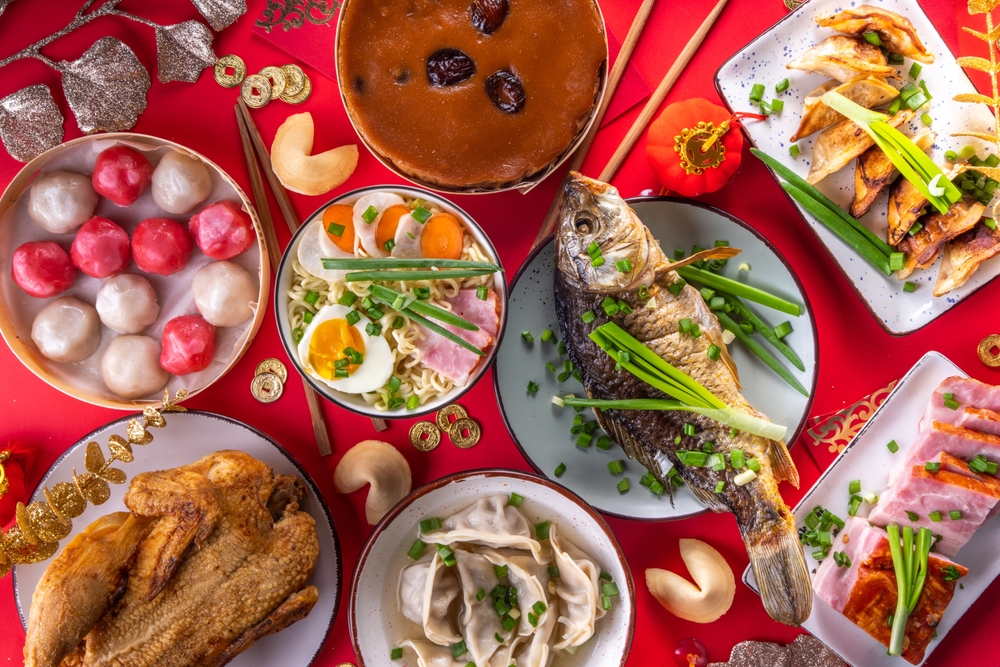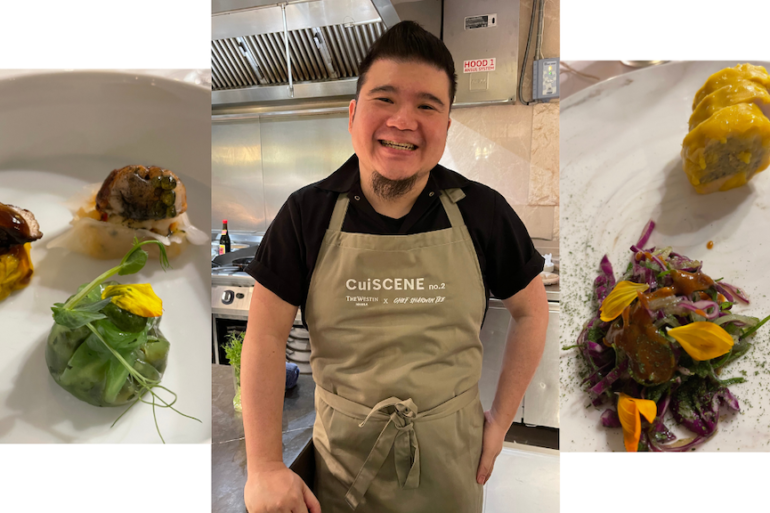More than just being delicious, they are also imbued with deep cultural symbolisms from longevity to abundance.
Chinese New Year is happening in a few days. Expect parts of the country to be painted in red (quite literally, with the color considered auspicious by the Chinese), little ones eagerly waiting for their ang pao, lively lion dance performances—and of course, lots of great food.
Staples on the Chinese New Year menu, however, are not simply chosen for their taste. Food symbolism has a long history in China, dating to as far back as two centuries ago, and is taken very seriously on special occasions. On the subject, the venerable Filipino-Chinese writer Clinton Palanca wrote in his book My Angkong’s Noodles (2014): “The kind of food that is cooked for celebrations is not just ordinary food, but more so.”
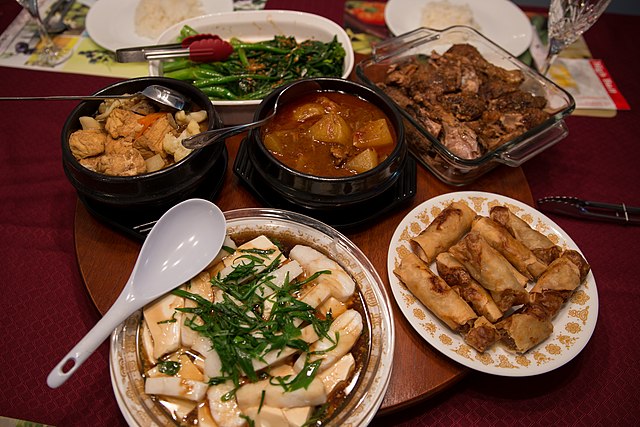
Photo by Mack Male, Wikimedia Commons
Each dish served has an auspicious symbolism based on its pronunciation or appearance, such as its color or shape. The way these dishes are prepared, served, and eaten is also imbued with meanings.
In the Philippines, home to Binondo, the world’s oldest Chinatown, Chinese New Year celebrations mean food aplenty—and hopefully, luck aplenty as well. With this, we’ve rounded up eight of the country’s most popular Lunar New Year foods and why they’re considered bearers of good fortune. You may want to have these on your dining table to attract good luck this 2024!
Tikoy
No other food is more closely associated with Chinese New Year in the Philippines than tikoy. Even if you’re not Filipino-Chinese, you may have experienced—at least once in your life—receiving tikoy every time CNY comes around.
Tikoy (or nian gao), a kind of glutinous rice cake, was brought to the Philippines by Chinese traders. It is said that the word is from tike which is Hokkien—the most widely spoken language in the Filipino-Chinese community—for “sweet pastry.”
So, why is tikoy auspicious? Its stickiness symbolizes togetherness within the family and other important relationships, as well as luck sticking to you all year.
Noodles
Noodles are a staple of Chinese cuisine, especially celebrations, because they symbolize long life—just make sure the one preparing the dish doesn’t cut or break the noodles, otherwise what you might be attracting is bad luck! The elongated shape of noodles is thought to represent the passage of time and a long, healthy life.
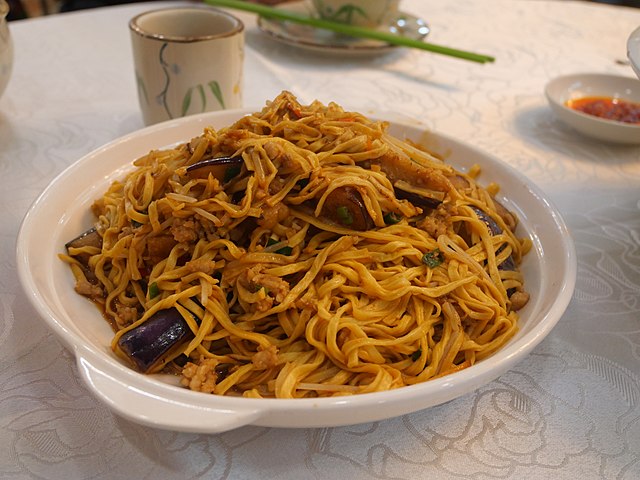
It has then become a custom to eat “longevity noodles” during special occasions. These are deliberately left uncut to maintain their long form, and are served to honor elders on their birthdays or during festivals like Chinese New Year. By eating noodles, it is believed that one can absorb not only longevity but also the wisdom accumulated over a long life.
Fish
Fish is another mainstay in any Chinese New Year feast as it represents abundance and fortune. There are certain kinds of fish, however, which have lucky meanings. Serving catfish, for instance, is to wish for overabundance or surplus for the rest of the year, with the Chinese word for the fish (鲶鱼 niányú /nyen-yoo) sounding like 年余 (nián yú) which means “year surplus.”
Meanwhile, Crucian carp (鲫鱼 jìyú /jee-yoo) sounds like the Chinese word 吉 (jí /jee or ‘good luck’), so eating it is considered to bring good luck.
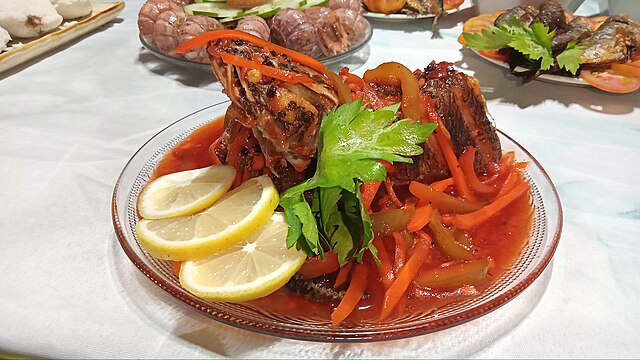
The first part of the Chinese word for “mud carp” (鲤鱼 lǐyú /lee-yoo) is pronounced like the word for gifts (礼 lǐ /lee), the Chinese then believe that eating this kind of fish during the Chinese New Year attracts good fortune.
Chicken
Chicken is a homophone for ji or 吉, meaning “good luck” and “prosperity,” making it a popular choice for any celebration, not just during Chinese New Year. It is usually served whole (yep, head and feet included) to symbolize “unity” and “wholeness,” as well as “a good beginning and end” to the year.

Interestingly, the chicken feet are usually eaten by the breadwinner of the family, with the Chinese believing that this might help them “grab” onto wealth. The word “grab” is a homophone of “chicken feet” in Chinese.
During get-togethers and feasts, the chicken is first offered to one’s ancestors and gods with a prayer asking for blessings and protection. It is usually braised or roasted and cooked with simple ingredients such as ginger or soy.
Dumplings
Also widely popular across China, dumplings have always been a traditional lucky food for the Lunar New Year, backed by over 1,800 years of history. Why they’re considered lucky is quite obvious—they look like boat-shaped Chinese gold and silver ingots. The Chinese have it that the more dumplings you eat during the New Year celebrations, the more money you can make in the year.
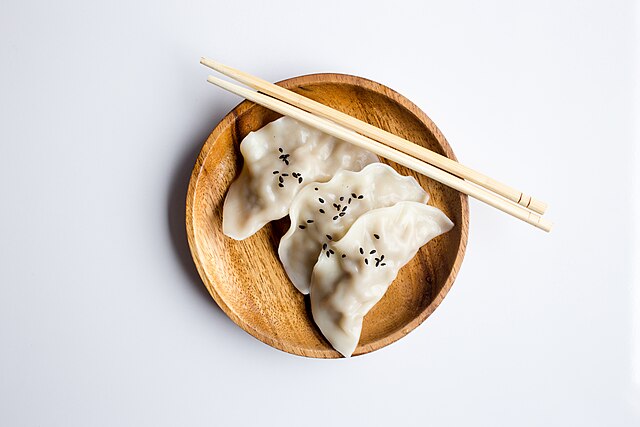
Aside from their shape, dumplings are usually stuffed with various fillings that symbolize different meanings: celery represents hard work that leads to a wealthy life; leek represents affluence; and cabbage represents different ways to make a fortune.
Spring Rolls
More popularly known as lumpiang shanghai in the Philippines, spring rolls represent wealth and prosperous beginnings as their golden color and shape make them look like gold bars. The Chinese name for the holiday also means “spring festival” in English, and this dish, a common New Year’s food, is named in its honor.
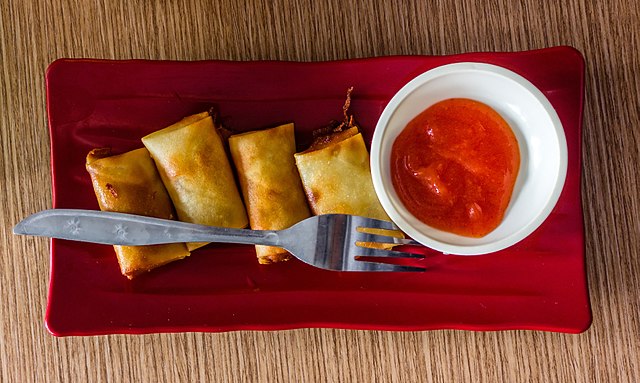
Photo by Crisco1492, Wikimedia Commons
These deep-fried rolls are usually stuffed with meat and vegetables rolled in a wrapper made of flour and water and have also become a staple in Filipino birthday parties.
Vegetables
Veggie-based dishes may not sound exciting, with celebrations usually highlighting more indulgent meat-based dishes. Chinese New Year feasts, however, are not complete without them.
Vegetables signify “spring” and all that comes with it like rebirth, renewal, new energy, progress, and even wealth. Just like fish, there are several vegetables served during Chinese New Year gatherings that have auspicious symbolisms.
In Cantonese, the word for lettuce (sang choi) sounds similar to the phrase which means “growing wealth.” Baby bok choy symbolizes wealth and good fortune for the rest of the year. Gailan (Cantonese)/ jielan (Mandarin) or Chinese broccoli, meanwhile, signifies harmony.
So, while vegetable-forward dishes may not be as festive as, let’s say, roasted pig or chicken, having them on your table on Chinese New Year is not only a healthier option, but a potentially auspicious one as well.
Fruits
Some fruits are also considered lucky during Chinese New Year celebrations such as tangerines, oranges, and pomelos. Their round shape represents fullness, while their “golden” color symbolizes wealth.
Eating and displaying tangerines and oranges are believed to bring good luck and fortune, with the Chinese for orange and tangerine being 橙 (chéng /chnng), which sounds like the Chinese for ‘success’ (成). Moreover, one of the ways of writing tangerine (桔 jú /jyoo) includes the Chinese character for luck (吉 jí /jee).
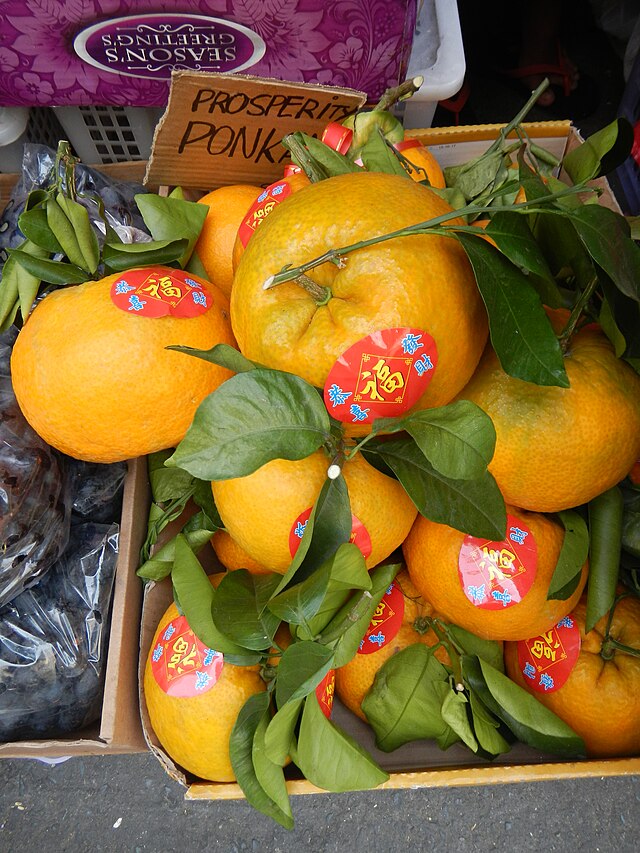
Eating pomelos is also thought to bring prosperity. The more you eat, the more wealth it will bring, as the saying goes. The Chinese for pomelo (柚 yòu /yo) sounds like ‘to have’ (有 yǒu), except for the tone, and like ‘again’ (又 yòu).

